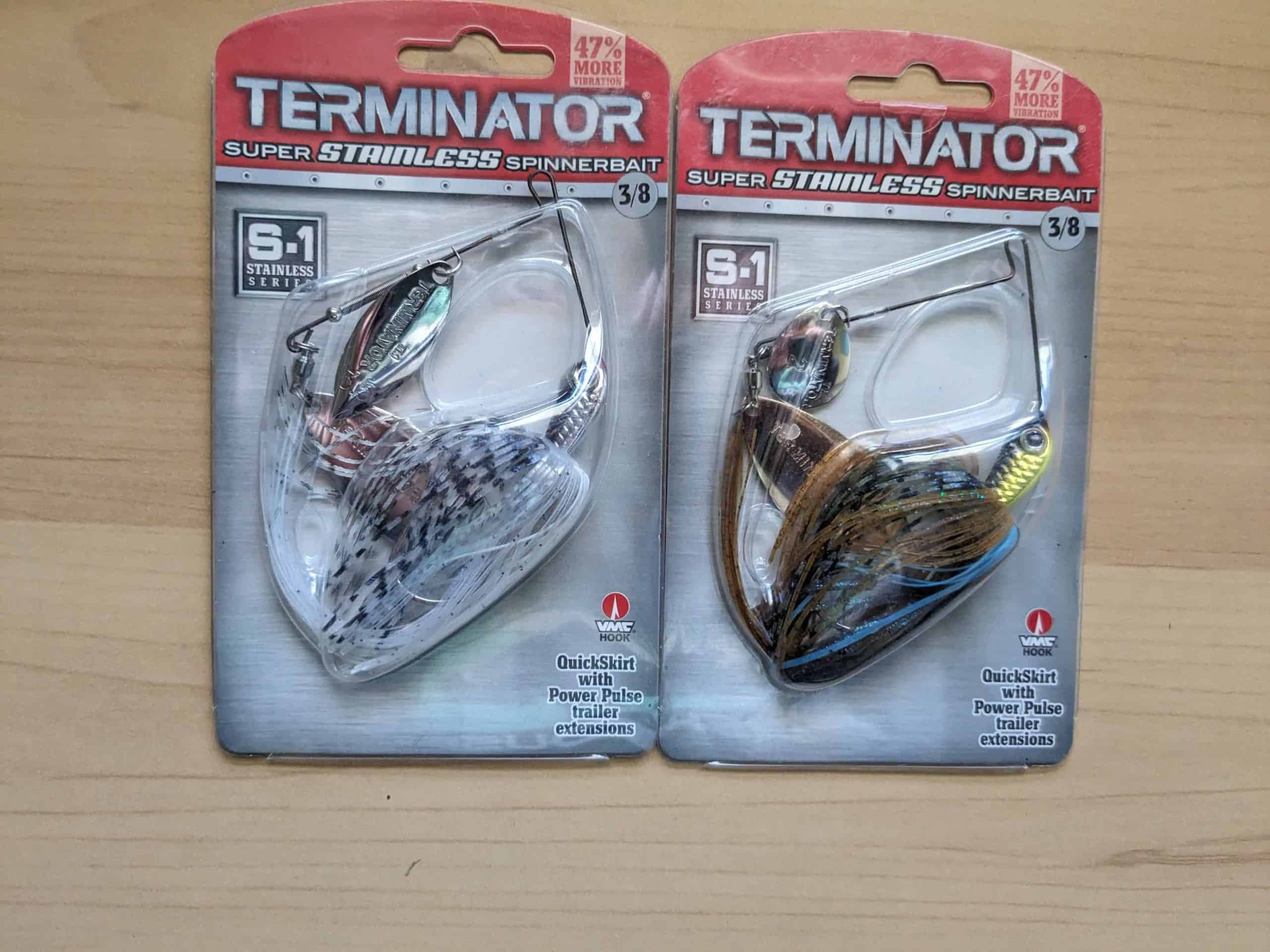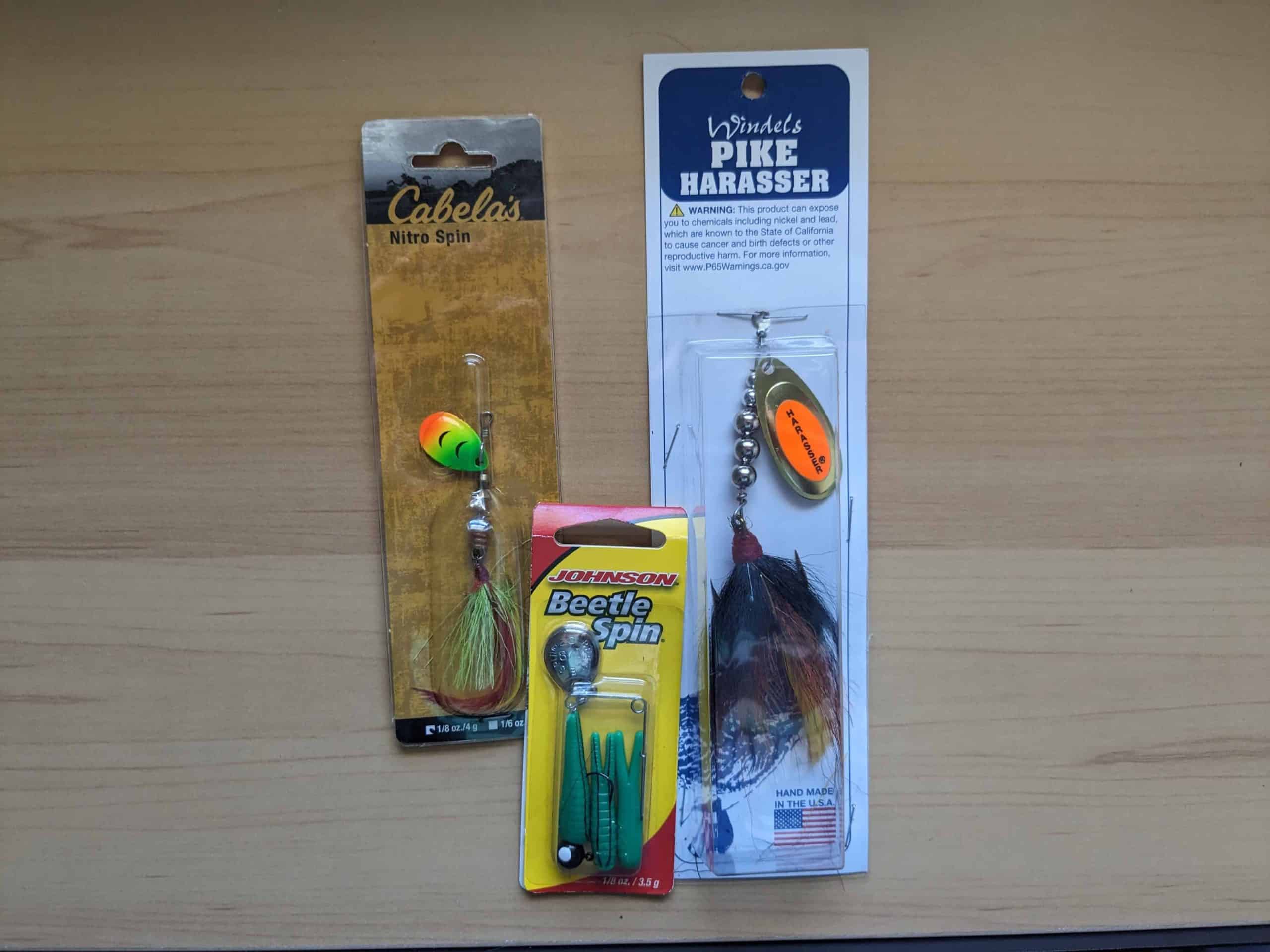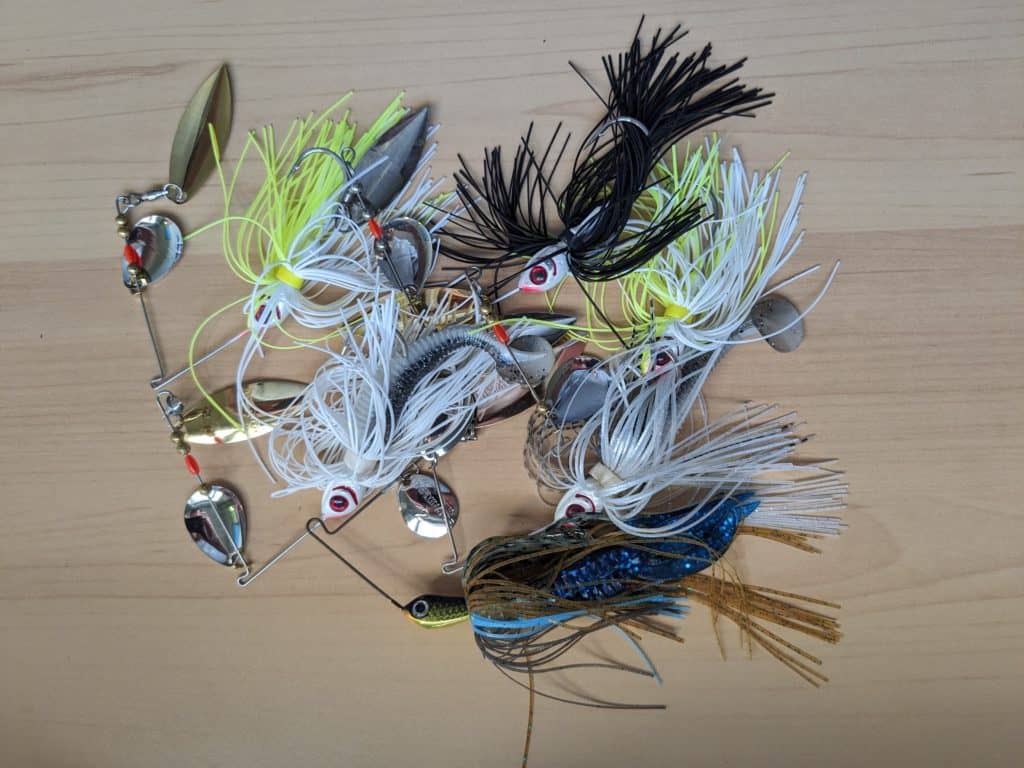In the ever-evolving world of bass fishing, it’s easy to get swept up in the current of new lure trends and forget about the tried-and-true classics. Since the introduction of the chatterbait, the buzz around its impressive success has drowned out other lures, leading many to forget about the ole spinnerbait.
Yet, for those in the know, the spinnerbait remains an undeniably effective, versatile, and rewarding option in the angler’s arsenal. I believe in the saying: “If it ain’t broke, don’t fix it”. While lures like the chatterbait and various other bladed jigs are great lures to catch big bass, we are going to focus on the why and how to fish a spinnerbait. If you are already thinking about clicking off this post, anglers like Kevin Van Dam and Rick Clunn swear by them. You know, the guys who are legends of the sport and have won millions, so it could be worth learning a thing or two.
What is a Spinnerbait?
As a beginner, it’s important to first understand what a spinnerbait is. The term spinnerbait might sound technical, but it’s really quite simple. A spinnerbait is a metal lure featuring one or more blades that spin around a wire axis when the lure is in motion. This spinning creates a vibration that simulates the movement of prey, making it an great option for hungry bass. If you don’t care what it is, just know they catch lots of fish.
How to Fish Bladed Spinnerbaits for bass
The bladed spinnerbait is a great place to start for any beginner and any pro angler. The design consists of a lead head, a hook concealed within a rubber skirt, and one or two metal blades (typically). The blades’ movement in the water draws in the bass, while the colorful skirt seals the deal. With the variety of color, shape, and size options, traditional spinnerbaits can mimic a wide range of bait, from shad to crawfish, to draw in your catch. While there are a variety of blade types you may hear about, I typically fish “willow” or “Colorado” style blades. A willow blade looks just like a willow leaf, while a Colorado blade is more circular in shape. See the photo below for the respective shapes. If you are interested in all of the blade offerings you can see, check out this article. Note: Your options are endless.

As shown in the above photo, I love throwing a 3/8 oz. Terminator spinnerbait in a variety of colors. They are affordable, durable, and seem to flat out catch fish. Some other great recommendations that don’t break the bank include spinnerbaits by Booyah and Strike King. They have a variety of models that perform great out of the box. For trailers, I keep it simple and often match a grub or swimbait style bait on the hook for some added flair. A personal favorite recently has been the Storm Largo Shad.
Inline Spinners & Beetle Spins: Spinnerbait Alternatives
As a newcomer to the fishing world, you might want to explore other spinnerbait alternatives. Inline spinners are a worthy addition to any tackle box. They feature a blade or blades that spin around a straight wire, with a weighted body and hook at one end. The blades’ motion and flash are a beacon for bass in any water clarity.
Beetle spins offer another unique approach. They combine a soft-bodied lure, resembling a beetle or jig, with a spinning blade. The result? A versatile bait that merges the visual appeal of a soft bait with the noise and flash of a spinnerbait. Believe it or not, the beetle spin is a lure that can catch huge largemouth and smallmouth alike, and is a confidence bait when the water is cold.

There is a solid chance that most “bass guys” will laugh and completely discredit these lures. Frankly, those guys are nerds. They equate these spinners to people who don’t know how to fish or kids, as it is a popular style lure for that demographic due to their ease of use. Let me tell you, in-line spinnerbaits can catch both numbers and size. They almost always produce bites, which is great for when the fishing is tough. They also can net you big panfish, trout, and damn near anything that bites. Don’t let your pride interfere with a great day of fishing, it isn’t worth it.
Your Summer Spinnerbait Fishing Guide: Tips for Beginners
1. Pick the Right Spinnerbait
Choosing the right spinnerbait for summer bass fishing is crucial. For traditional spinnerbaits, go for larger models (3/8 to 3/4 ounces) with bigger blades. These can mimic the larger baitfish that bass love to feed on in the summer. The skirt color is also important. To keep it simple, pick a few shad style patterns, and some bluegill or darker color shaded spinners for your other conditions. For blade colors, a gold or copper color blade when the water is stained and a silver when the water is clear or it is a sunny day. If you struggle to remember which to pick, I always remember: “Silver in the sun, copper in the clouds”. While this isn’t 100% true, it has served me well over the years and worth remembering in my opinion.
In terms of inline spinners, smaller sizes work better in the summer. Choose silver or gold blade colors. Beetle spins should be vibrant and bright during the summer months to attract bass hiding in the depths. I rarely deviate from a silver, black, or gold blade for in-line spinners. If they aren’t biting on one of those colors, I typically pack up and go home. Brands like Mepps, Blue Fox, or Rooster tail are all fantastic options and found at most big box stores. If I only had to pick one color for the rest of my life, it is Mepps Black Fury #3 with a dressed treble hook. That sucker could entice a bite from a bluegill to Rosie O’Donnell, and I ain’t kidding.
2. Understand the Best Fishing Times
Fishing with the best spinnerbait won’t yield results if you aren’t fishing at the right time. During summer, bass fishing is best in the early morning or late evening when the water is cooler. This is when bass venture from deeper waters to shallow feeding areas. While you can still have success fishing a spinnerbait during the afternoon hours, your sunrises and sunsets are your best bet for actively feeding fish.
3. Vary Your Retrieval Speeds
Spinnerbaits can be successful at any retrieval speed, from slow to fast. In the summer, bass are generally more active and will pursue faster-moving lures. Don’t be afraid to mix up your retrieval speeds to find what works best for your location. Burn it in quick, wind it slow, and anything in between. Never be shy to try a burn and stop retrieval, which often is the ticket on particular days to slaying them.
4. Fish Across a Wide Area
Bass fishing in the summer often involves covering a large area. Spinnerbaits are ideal for this, as they can be cast far and wide and retrieved quickly without snagging on vegetation or rocks. While this isn’t news, a spinnerbait is one of the best tools for covering water as fast as humanly possibly. Covering as much shoreline as possible at various depths will net you some fish, so don’t be afraid to shake and bake.
5. Target Areas with Cover
Focus on areas with thick cover like docks, overhanging trees, or dense vegetation. These are the places where bass will escape from the summer heat. Fishing near structures with slightly cooler water temperatures can also be a successful strategy. Targeting weed and grass lines is always fantastic to catch the bass that are positioned for an easy meal.
6. Capitalize on Windy Days
If you aren’t throwing a spinnerbait on windy days, you are nuts. This is probably one of the best baits that’s ever been created to chuck when it’s windy. Due to the chop of the water, the light will reflect off the blades in erratic ways that make the bass go nuts. If you catch the right bite, you can net 50+ fish days with ease on a single spinnerbait. It is absolutely magical and will have you fidgeting at work when it is 15-20+ MPH winds.
7. Keep gear simple
Fishing a spinnerbait will not require a dedicated setup. I recommend fishing your bladed varieties on a 7′ Medium Heavy fast action rod with 14-20 pound monofilament line. While some folks may disagree, I think this is one of the most versatile combos in bass fishing, and can be used for virtually any bass lure. For in-line spinners, almost any Medium Light spinning rod should do the trick. However, these would be a perfect opportunity to pick up BFS fishing so you can throw them on a baitcaster. For more info on BFS fishing and just how awesome it really is, lock your peepers on this article.
Cast Away!
Spinnerbaits are an excellent tool for any angler, especially during the summer months. Whether you’re using a traditional spinnerbait, an inline spinner, or a beetle spin, always remember that successful fishing hinges on understanding the behavior of the bass and using your lure to trigger their natural instincts. If you are still looking for more information on how to effectively fish a spinnerbait, check out Matt from TacticalBassin who is a spinnerbait fanatic and a fish catching guru.
Go beat em up.
Tight lines,
Dawson
